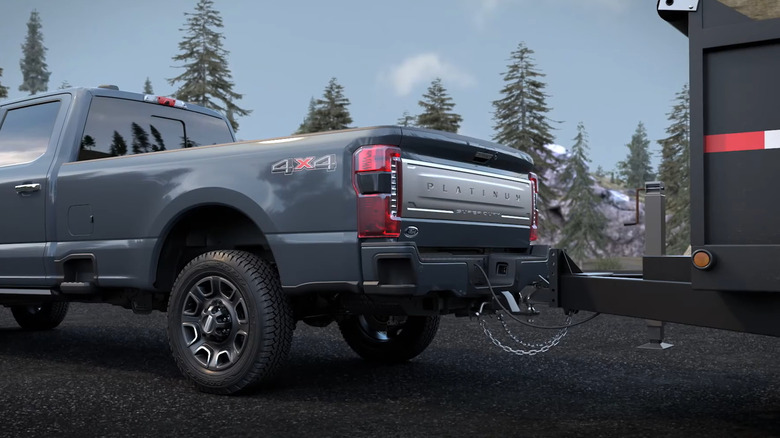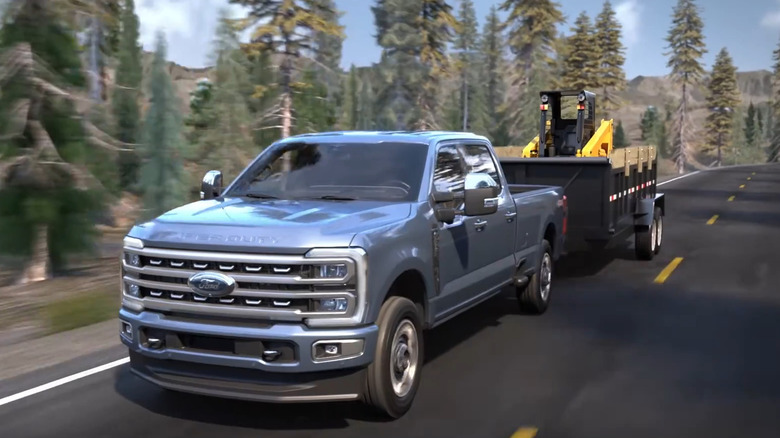What Is A Smart Hitch And How Does It Work For Towing?
If you're in the market for a new pickup truck, you've no doubt taken many factors under consideration, including cab size, bed size, and engine power. However, if you're looking to use your new truck to haul heavy gear around town, the vehicle's towing package will no doubt factor considerably in your decision-making process. Of course, these days it can be more difficult than ever to discern which towing package best suits your needs, as trucks have arguably gotten stronger than they've ever been. They've gotten smarter too, as many modern trucks now feature upgraded tech features designed to enhance towing abilities.
While companies like Toyota are developing radical options like Touchless Towing, other manufacturers are taking a less revolutionary approach to how their vehicles haul. That includes Ford, whose Smart Hitch feature is more focused on helping drivers load up and go with increased safety and efficiency. Ford debuted the feature in 2021, with its long-running F-150 pickup being the first of its builds to feature the technology. In the years since, Ford has also begun offering the option in models like the F-250 and many of its Super Duty builds.
At the time of its debut, the Smart Hitch was packaged as part of the upgraded towing package along with Ford's Onboard Scales option for an additional $650. There's a good reason those two features were packaged together, as Ford's Onboard Scales interact with the Smart Hitch feature.
Here's how Ford's Smart Hitch feature works
While you're checking out available towing packages for pickup trucks, you'll want to note the key differences between the vehicle's towing capacity and its max tongue weight. That's particularly important if you're eyeing a Ford pickup with Onboard Scales and the Smart Hitch upgrades, as towing capacity and tongue weight are directly connected to each. As for how, when each is engaged, they can be used to not only help drivers gauge the precise weight of their load, but better balance it before hitting the road.
Specific to Smart Hitch, the feature is designed to utilize sensors to measure the tongue weight of the trailer you're attaching to the hitch. Those readings will show you exactly how balanced the weight is from the trailer onto the truck's hitch and front axle. You can then use those readings to better distribute the weight of the items in the trailer. Doing so may decrease the amount of stress on your truck while also ensuring less movement from the trailer as you drive. Balancing your load should also increase fuel and engine efficiency while you're driving.
Those readings obviously need to be as accurate as possible, and for the Smart Hitch to function properly, your vehicle needs to be turned on with its tires straight and inflated to the recommended PSI. The truck also needs to be on a level surface to ensure accuracy. From there, follow the steps on the truck's in-dash display screen to set your Smart Hitch parameters. Consult your vehicle's Owner's Manual if you need assistance.

